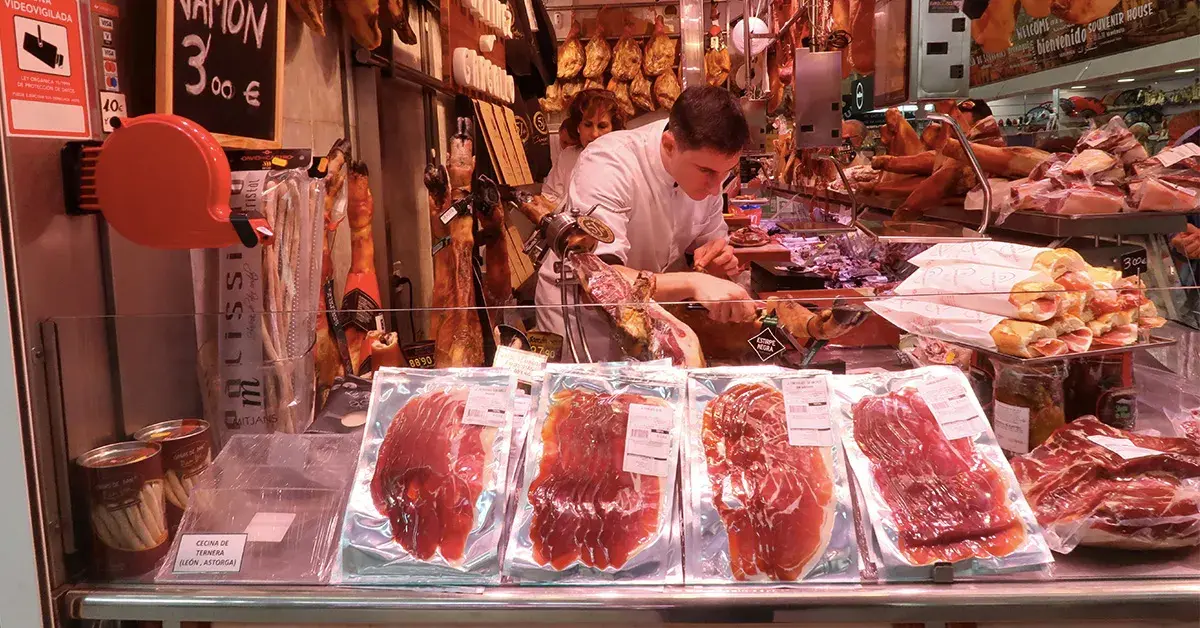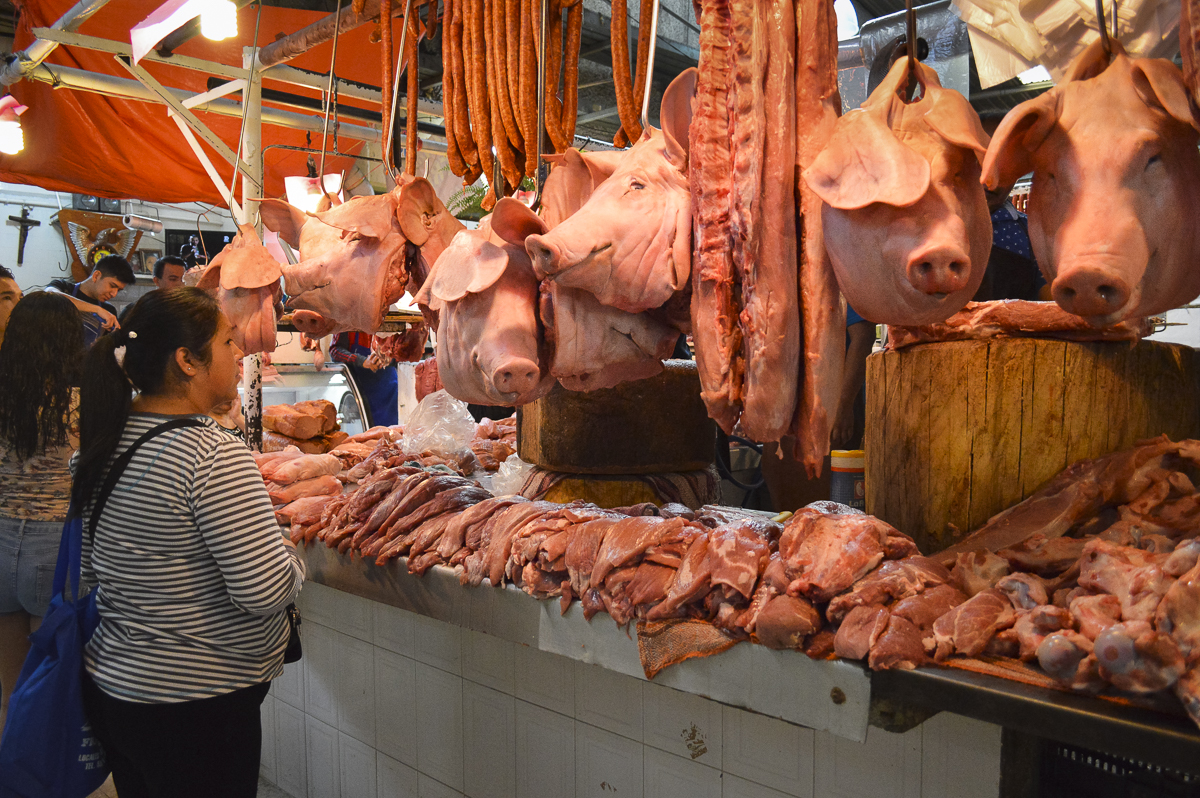Bagley Farms Meat Market Edwardsville IL: Your Best Location for Neighborhood Meat Option
Bagley Farms Meat Market Edwardsville IL: Your Best Location for Neighborhood Meat Option
Blog Article
Uncover the Art of the Butcher's Cut in a Modern Meat Market
In the ever-evolving landscape of contemporary meat markets, the butcher's cut has actually transcended its standard origins, merging olden craftsmanship with contemporary methods. Today's butchers are not just cpus of meat; they are educated craftsmens who emphasize sustainability and honest sourcing. Their knowledge in picking and preparing cuts tailored to particular cooking requirements uses an unparalleled dining experience. Yet, what really sets the modern butcher apart is their ability to build a much deeper connection in between consumers and the beginnings of their meat. Just how do these masters equilibrium practice with innovation, and what implications does this have for the future of meat usage?
Evolution of Butchery Strategies
The development of butchery strategies reflects a rich tapestry of technology and adaptation driven by innovations in modern technology, changes in consumer need, and a deeper understanding of meat science. Historically, butchery was a craft gave with generations, with methods honed over centuries to make best use of return and flavor. The commercial change ushered in automation, transforming typical practices and enabling large-scale processing.
The mid-20th century saw butchery techniques further refined by scientific insights right into muscle mass biology and meat aging, boosting both inflammation and preference. Advancements like vacuum packaging and refrigeration extended item shelf-life, allowing butchers to expand offerings and enhance high quality control. This duration also marked the surge of customized equipment, such as band saws and meat slicers, which enhanced precision and efficiency in meat processing.

The 21st century has introduced electronic technology into the butchery realm. Electronic systems currently help in monitoring animal provenance and optimizing cuts to fulfill specific consumer choices. Additionally, a renewal in artisanal butchery has actually emerged, blending typical skills with contemporary knowledge to accommodate customers seeking moral and lasting meat options. This advancement highlights a vibrant interaction in between tradition and innovation, conference contemporary demands while protecting the craft's heritage.
Understanding Meat Cuts
Understanding the details of meat cuts is necessary for both butchers and customers seeking high quality and value. For butchers, exact cuts show ability and regard for the craft, guaranteeing minimal waste and optimum return.

Comprehending muscle mass structure is critical; muscular tissues made use of more often by the animal have a tendency to be tougher and are best suited for sluggish food preparation methods, while less-used muscle mass, like those discovered in the loin, are a lot more tender and ideal for cooking or roasting. Knowledge with these differences empowers consumers to make informed choices, enhancing their try this site cooking ventures.
Selecting High Quality Meat
Choosing the ideal meat involves even more than simply picking an aesthetically attractive piece from the display screen. The art of selecting top quality meat needs a critical eye and knowledge of certain qualities that symbolize freshness and excellence.
Secondly, consider the marbling, which describes the white flecks of fat within the muscle mass. Correct marbling is a vital sign of tenderness and taste, as it thaws throughout food preparation, boosting the meat's juiciness. Bear in mind, greater marbling usually associates with superior high quality cuts, such as USDA Prime.
Appearance is another vital aspect; meat needs to really feel solid to the touch, not slimed or extremely soft. Additionally, be mindful of the click here now fragrance. Fresh meat must have a tidy, neutral scent, totally free from any type of sour or off-putting odors.
Matching Cuts With Cooking Techniques

Alternatively, tougher cuts like brisket and chuck roast are rich in collagen, which breaks down into gelatin when prepared gradually. These cuts are ideal for braising or sluggish roasting, enabling the meat to soften with time and develop deep, complicated flavors. Cuts such as brief ribs and pork shoulder make out well with slow-cooking methods, where extended cooking times transform their robust structures into succulent meals.
Lamb shanks and oxtail, which need extended food preparation to soften, are best prospects for cooking or slow-moving simmering. These approaches coax out abundant, passionate tastes while keeping moisture. By understanding the special qualities of each cut, chefs and home cooks alike can elevate their culinary developments, making certain each recipe is both pleasing and remarkable.
The Butcher's Role Today
Browsing the progressing landscape of the contemporary meat market, the butcher's function today prolongs beyond plain preparation of cuts. Contemporary butchers are cooking craftsmens, educators, and supporters for sustainable practices. They link the space between the ranch and the fork by guaranteeing moral sourcing, comprehending animal husbandry, and focusing on transparency in the supply chain. This change reflects the expanding consumer need for high quality over amount, where provenance and animal well-being are critical.
In enhancement to crafting accurate cuts, butchers currently involve straight with customers, supplying cooking recommendations and customizing selections to fit individual needs and choices. Their expertise in meat aging, marbling, and flavor accounts empowers consumers to make educated choices, enhancing their culinary experiences. This tailored service exhibits the butcher's evolving function as a relied on expert in the kitchen.
Additionally, butchers are crucial in reducing waste, using entire animals to create diverse items such as sausages and supplies. This detailed strategy not only respects the animal however likewise straightens with modern sustainability objectives. In this way, the contemporary butcher personifies both practice and innovation, adapting to an ever-changing market while protecting the creativity and honesty of their craft.
Final Thought
Proficiency in recognizing varied meat cuts and high quality signs empowers butchers to give enlightened recommendations, lining up certain cuts with ideal cooking methods. By recognizing historical practices while welcoming modern demands, the butcher's duty stays important in today's sophisticated meat market.
Report this page